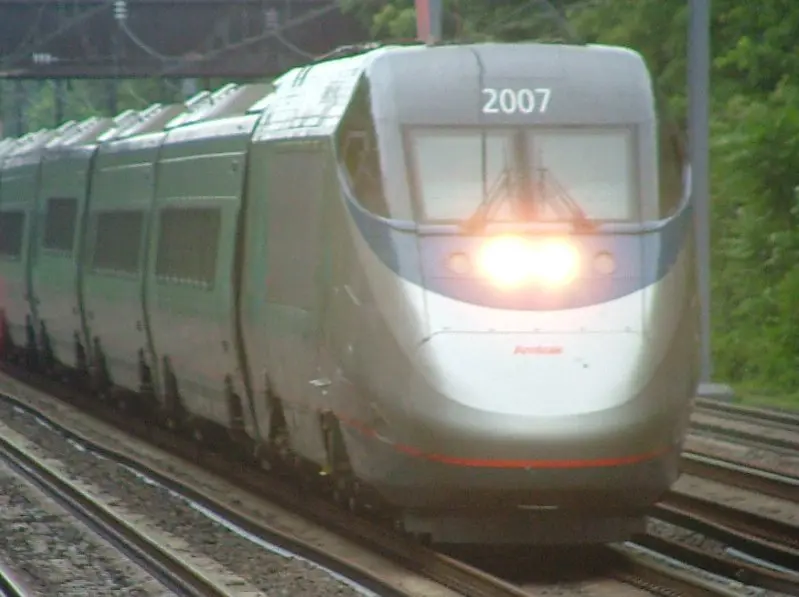The Philadelphia Amtrak accident has grabbed major headlines in recent days. Philadelphians have joined the families and friends of Amtrak 188 victims to endure the tragedy together. The tragedy hits home.
Amtrak is popular among Philadelphia area commuters who use the train service to get to work every day or to visit family members on weekends. In fact, nearly one-third of all Amtrak passengers travel in the area commonly referred to as the Northeast Corridor — the stretch of railroad connecting Boston and Washington D.C, with New York City and Philadelphia as the major stops in-between.
The Northeast Corridor is one of the most efficient train routes in the United States serviced by Amtrak. However, Amtrak and Congress have been subjected to criticism for the corridor’s poor infrastructure for years. Unfortunately, it has taken a tragedy of symbolic proportions to cast light on the issues that have negatively impacted passenger safety, including train speed, rail conditions, improper maintenance and/or a lack of safety controls. Taken together, these problems constitute a confluence of factors that can result in catastrophic injury and death.

The Derailment of Amtrak Train No. 188 in Philadelphia Raises Questions
Train No. 188 originated from Washington D.C. and was destined for Penn Station in New York City. The train derailed on Tuesday, May 12, 2015 shortly after 9:00 p.m. as it approached Frankford Junction in Philadelphia. All seven train cars, including six passenger cars carrying 243 passengers, came off of the train tracks and rolled onto their sides. Of the 243 passengers, 8 have died and more than 140 were injured.
After the accident, investigators discovered that the train’s speed increased from 70 to 102 miles per hour as it approached a curve in the tracks. The speed limit at the tracks was only 50 miles per hour. Speed was undoubtedly a cause of the train’s derailment. Over the last decade, there have been, on average, 31 Amtrak train derailments per year. When the United States Congress and regulators fail to act, civil litigation can make a difference.
Filing a Lawsuit Against Amtrak
Amtrak is funded by taxpayers. Therefore, Congress has limited Amtrak’s liability to train accident victims and their families. The law can be found in Title 49, Section 28103 of the United States Code, which limits Amtrak’s liability to $200 million “for all claims, including claims for punitive damages, arising from a single accident or incident.” As a result, there is a strong possibility that Amtrak train accident victims will not receive adequate compensation for their damages in the event of a major Amtrak accident.
Federal law permits Amtrak to choose whether it will defend the lawsuit in Federal Court, as opposed to a State Court. This can impact the outcome of a personal injury lawsuit. For example, bringing a lawsuit in Federal Court is more costly than it is in State Court, the pool of potential jurors is larger in Federal Court, and the Rules of Procedure are different. For those reasons, Amtrak will often choose to defend itself in the Federal Court System.
Proving the Lawsuit Against a “Common Carrier” Like Amtrak
Public Transportation entities like Amtrak and SEPTA are referred to in the law as “common carriers.” To prosecute a successful lawsuit against a common carrier for personal injuries in Court, the passenger must be able to prove:
- The passenger suffered an injury/damages.
- The existence of a relationship between the carrier and the passenger giving rise to the carrier’s duty of care owed to the passenger.
- The carrier’s failure to meet its responsibilities and duties to the passenger.
- The passenger’s injury/damages were a result of the carrier’s failure to meet its responsibility and duties.
A skilled attorney will not only investigate the accident to collect evidence, but will also counsel the injured victim and his or her family through the turmoil that accompanies life-changing accidents. In addition to physical injury, injured victims also face economic challenges associated with medical bills, time away from work, and costly home modifications. Sound legal advice from a skilled professional can prepare injured victims for the road ahead.
The attorneys at McLaughlin & Lauricella P.C. stand by their clients. They have faced the National Football League, Penn State University, the Archdiocese of Philadelphia, and many large health systems. Paul Lauricella and the lawyers and associates at McLaughlin & Lauricella have continuously demonstrated the ability to build cases from the ground up to obtain excellent results for their clients. If you, or your loved one, were injured as a result of a railroad accident, contact McLaughlin & Lauricella today for your free and confidential consultation.



